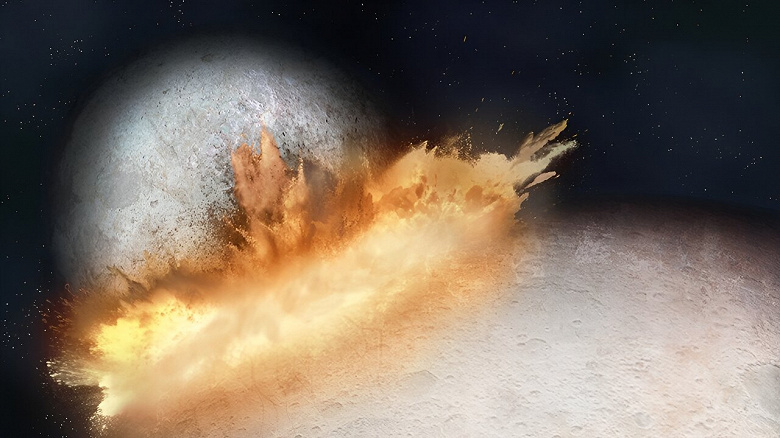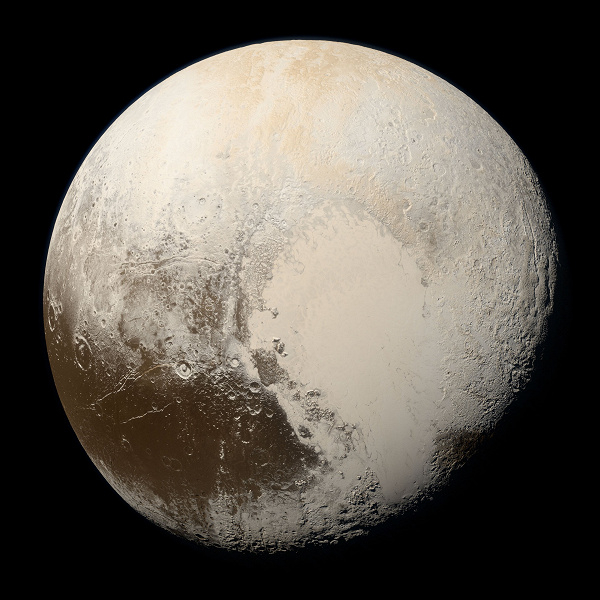Exploring impacts in outer solar system reveals Pluto's history
An international team of astrophysicists has solved the mystery of the appearance of a heart-shaped structure on the surface of Pluto. Since 2015, when cameras on NASA's New Horizons space mission recorded this unique geological formation, it has attracted the interest of scientists around the world.
A team of scientists from the University of Bern, with support from NCCR PlanetS and the University of Arizona in Tucson, used numerical modeling to study the origin of Sputnik Planitia — the western teardrop «heart» Pluto. Their research, published in the journal Nature Astronomy, argues that Pluto's early history is linked to a catastrophic collision with a planetary body about 700 km in diameter that formed Sputnik Planitia. These results also indicate a change in ideas about the internal structure of Pluto and the rejection of the assumption of the presence of a subsurface ocean.
«The Heart», Tombo Region, attracted public attention with its shape immediately after its opening. But it immediately attracted the attention of scientists because it is covered with a high-albedo material that reflects more light than its surroundings.
However «heart» does not consist of one element. Sputnik Planitia (western part) covers an area of 1200 by 2000 kilometers. This region is three to four kilometers lower in altitude than most of Pluto's surface.
«Sputnik Planitia's striking appearance is due to the fact that it is predominantly filled with nitrogen ice, which moves and convects, constantly smoothing the surface. This nitrogen most likely accumulated quickly after the impact due to the lower altitude of the regions», — explains Dr. Harry Ballantyne from the University of Bern, lead author of the study.
Eastern part of the «heart» structure also covered with a thin layer of nitrogen ice, the origin of which is still unclear. «The elongated shape of Sputnik Planitia indicates that the impact was not a direct frontal one, but rather an oblique one», — notes Dr. Martin Jutzi from the University of Bern, who initiated the study.
The team used smoothed particle hydrodynamics (SPH) simulation software to digitally recreate the impacts by varying parameters of Pluto's composition, the impactor's composition, velocity and angle. This simulation confirmed the assumptions about the oblique angle of impact and helped determine the composition of the second body.
Dr. James Ballantyne, one of the team's lead researchers, explains that Pluto's core is so cold that the rocks did not melt despite the heat of the impact, and due to the angle of impact and the low speed of the impact, they did not sink into Pluto's core, but remained intact , in the form of a spot on the surface».
«Somewhere under Sputnik Planitia there is a remnant of the core of another massive body that Pluto never digested», — adds co-author Eric Asphaug of the University of Arizona. This led to the formation of the shape observed by the New Horizons spacecraft.
«We tend to think of collisions as incredibly intense events in which we can ignore the details except for things like energy, momentum and density. But in the distant solar system, the speeds are much slower, and the surface ice is strong, so you need to be much more precise in your calculations. This is where the fun begins, — says Asphaug.

This research also helps to gain a deeper understanding of Pluto's internal structure. An impact similar to the one modeled most likely occurred at the very beginning of Pluto's history. However, this creates a problem: Sputnik Planitia is expected to slowly move toward the dwarf planet's pole over time due to the laws of physics. However, this region is still close to the equator.
The previous explanation was that Pluto, like some other planetary bodies in the outer solar system, has an underground ocean. According to this explanation, Pluto's icy crust in the Sputnik Planitia region is thinner, which would lead to swelling, and since liquid water is denser than ice, it would end up with excess mass, causing migration toward the equator.
However, new research offers an alternative view. In simulations, Pluto's entire primordial mantle is destroyed by the impact, and when material from the second body's core crashed into Pluto's core, it created a local excess mass that could explain equatorward migration without an underground ocean, according to Martin Jutzi, co-author of the study.< /p>
Dr. Adin Denton of the University of Arizona, also a co-author of the study, is currently conducting a new research project to estimate the rate of this migration. «This new version is the origin of „heart“ Pluto may lead to a better understanding of the origins of Pluto itself», — she concludes.
The research teams have extensive experience working together since 2011, in which they investigated «spots» the far side of the Moon. They plan to study similar scenarios for other outer solar system bodies, such as the Pluto-like dwarf planet Haumea.

